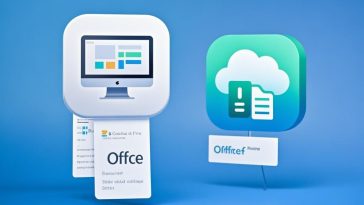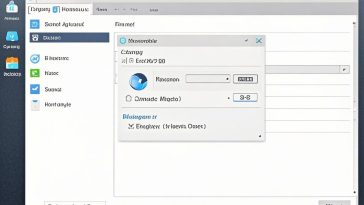Introduction
A QR code (Quick Response code) is a two-dimensional barcode that can store various types of data, such as website links, text, contact information, and more. Embedding QR codes in Word documents can be a convenient way to provide quick access to additional resources or information related to the document’s content. In this tutorial, we’ll guide you through the process of creating a QR code and inserting it into a Word document.
Choosing a QR Code Generator
Online QR Code Generators
Online QR code generators are web-based tools that allow you to create QR codes for free.
Examples of popular online QR code generators include:
- QRCode Monkey (https://www.qrcode-monkey.com/)
- QR Code Generator (https://www.qr-code-generator.com/)
These online generators typically offer a range of features, such as customization options, logo integration, and different output formats.
When choosing an online QR code generator, evaluate the features and capabilities to ensure they meet your needs.
Desktop QR Code Software
Desktop QR code software are standalone applications that you can install on your computer.
Popular options include:
- QR Code Studio (https://www.qrcode.studio/)
- QR Code Maker Pro (https://www.qrcodemaker.pro/)
Desktop software often provides more advanced features and customization options compared to online generators.
Consider factors such as cost, features, and compatibility with your operating system when selecting desktop QR code software.
Generating the QR Code
Selecting the Content Type
QR codes can store various types of content, such as:
- URLs (website links)
- Text (plain text or formatted text)
- Contact information (vCard)
- Calendar events (iCalendar)
- Email addresses
- And more
Choose the appropriate content type based on the purpose of your Word document.
- For example, if you want to provide a link to an online resource, select the “URL” content type.
Entering the Content
After selecting the content type, enter the specific content you want to encode in the QR code.
- For a URL, enter the complete web address (e.g., https://www.example.com).
- For text, type or copy-paste the desired text.
- For a file path, provide the complete file location on your computer.
Double-check the entered content to ensure accuracy and completeness.
Customizing the QR Code
Most QR code generators offer customization options to adjust the appearance of the QR code.
- Change the size of the QR code to fit your Word document layout.
- Adjust the error correction level to improve the code’s resilience to damage or distortion.
- Customize the color scheme to match your document’s branding or design.
Some generators also allow you to add logos, images, or background patterns to the QR code for branding or visual appeal.
Inserting the QR Code into Word
Copying and Pasting the QR Code
- The simplest method to insert a QR code into a Word document is to copy and paste the generated QR code image.
- Right-click on the QR code image and select “Copy” (or use the keyboard shortcut “Ctrl+C”).
- Open your Word document and position the cursor where you want to insert the QR code.
- Right-click and select “Paste” (or use the keyboard shortcut “Ctrl+V”).
Inserting the QR Code as an Object
For more advanced editing and formatting options, you can insert the QR code as an object or linked picture in Word.
- In the Word document, navigate to the “Insert” tab and click on “Object” or “Picture”.
- Browse and select the QR code image file from your computer.
Inserting the QR code as an object allows you to resize, reposition, and edit the image within the Word document.
Positioning and Formatting the QR Code
After inserting the QR code, you can adjust its position and formatting within the Word document.
- Use the alignment tools to position the QR code on the left, right, or center of the page.
- Resize the QR code by dragging the corner handles or entering specific dimensions.
- Maintain the aspect ratio of the QR code to ensure it remains scannable.
Consider adding captions, labels, or instructions near the QR code to provide context and guidance for users.
Testing and Troubleshooting
Scanning the QR Code
Before finalizing your Word document, test the QR code to ensure it functions correctly.
- Use a QR code scanner app on your smartphone or ta blet.
- Alternatively, many modern devices have built-in camera functionality to scan QR codes.
Scan the QR code and verify that it links to the intended content (e.g., website, text, or file path).
Troubleshooting Common Issues
If the QR code is not scanning properly, try the following troubleshooting steps:
- Ensure the QR code image is not distorted or blurred.
- Check that the content encoded in the QR code is correct and complete.
- Adjust the error correction level or generate a new QR code with higher error correction.
Refer to the QR code generator’s documentation or support resources for additional troubleshooting guidance.
Sharing and Distributing the Word Document
Saving and Exporting Options
Save the Word document with the embedded QR code using the standard “Save” or “Save As” functions.
If you need to share the document in a different format, you can export it to other formats while preserving the QR code.
For example, exporting to PDF or HTML formats should retain the QR code image.
Printing Considerations
When printing the Word document containing the QR code, ensure that the QR code prints clearly and with high resolution.
Adjust the print settings and scaling as needed to maintain the QR code’s quality and readability.
Consider printing a test copy and scanning the QR code to verify its functionality before producing final printed copies.
Conclusion
Embedding QR codes in Word documents can enhance the user experience by providing quick access to additional resources, websites, or information related to the document’s content. By following the steps outlined in this tutorial, you’ll be able to create a QR code and seamlessly integrate it into your Word documents, making it easier for readers to access the encoded content.
Remember, QR codes can be used for various purposes, such as linking to online resources, sharing contact information, or providing access to downloadable files. Don’t hesitate to explore additional resources or seek further guidance if you encounter any challenges during the process.







